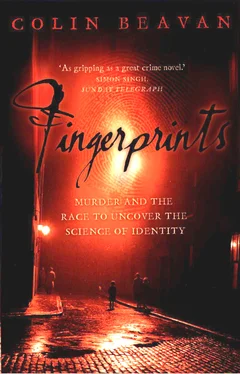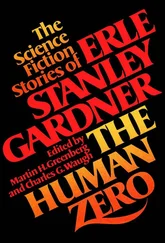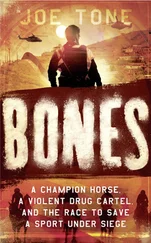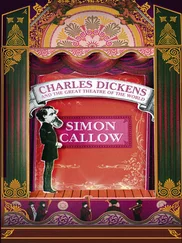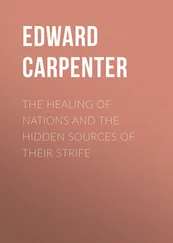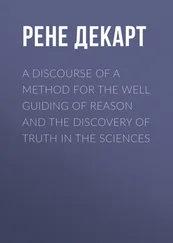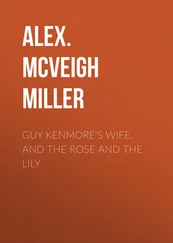Most mornings, young William Jones burst through the unlocked door of Chapman’s Oil and Colour Shop, heard the tinkle of the bell, and breathed in the sharp-smelling air, heavy with the odor of paint. But today the entrance off the High Street of Deptford, near London, was locked. The sixteen-year-old pressed his shoulder against the door and shoved. No use. It wouldn’t budge.
William had never known his boss, Thomas Farrow, to open the shop later than 7:30 A.M. In 1902, Farrow had been promoted to manager and moved into the shop’s upstairs apartment with his wife. In the three years since, he’d never failed to throw open the shop-front shutters when the first early-bird customer knocked, often at sunup. But this morning’s knocks had gone unanswered. The house painters who regularly visited the Chapmans had to cope without their supplies.
By the time William arrived, the fast-walking commuters were gone and the High Street was quiet again. Only stragglers still hurried past: red-eyed butchers rushing to Deptford’s slaughterhouses, unshaven sailors running to their ships moored on the south side of the Thames. The morning rush hour was over. It was 8:35. Still, the shop door was closed. William banged at the door. Over the clip-clop of passing horse-drawn carriages, he shouted at the upstairs windows. No reply. Something was wrong.
At first, William thought the Farrows were ill. At seventy-one and sixty-five, Thomas and Ann were getting frail. But then a niggling thought reminded William that today, Monday, was banking day, the one time when Mr. Farrow’s cash box swelled with a whole week’s earnings. When William looked through the letter box in the door, he saw that at the far end of the shop, in the Farrows’ small parlor, a large lounge chair lay tipped on its side—a bad sign. William sprinted to George Chapman’s other shop in Greenwich, recruited the help of Louis Kidman, Chapman’s assistant, and both ran back to Deptford. They would have to break their way in.
The boys burst through a shop adjoining Chapman’s. Out back, they scaled a dividing wall and dropped into the Farrows’ yard. They found the scullery door open, walked through it, and were immediately horrified by what they saw. Under the overturned lounge chair, Thomas Farrow’s body lay face down, crumpled in a grotesque, bloody pile. His bald head, resting on a metal fender surrounding the fireplace hearth, had been smashed open. A pool of dark blood filled the hearth and ran into the cold ashes. The whole grisly scene shocked William so badly that he never stopped to consider that, elsewhere in the building, Mrs. Farrow might be desperately in need of help.
Chapman’s Oil and Colour Shop stood squat and two-story on the High Street, lined up shoulder to shoulder in a long row of stores. At the southern foot of the High Street the railway ended, the terminus for the commuter line that carried the region’s clerks and laborers to the centre of London, away from the ugly town of Deptford, which for hundreds of years had been burdened with the stinking, disease-ridden industries that the capital turned away.
In the early seventeenth century, the filth-producing slaughterhouses, exiled by the capital’s city fathers, had moved here. When in 1897, the world’s largest proposed electricity-generating plant was refused a home in London, it too landed in Deptford, along with the smoke and dirt it belched from its chimney. Only the poorest and most desperate people wound up living among this filth. Some Deptford neighborhoods were so dangerous that policemen refused to patrol them alone.
Cold-blooded murder, however, was an uncommon spectacle. That was why, when Sergeant Albert Atkinson arrived at the scene of what the papers would call “The Shocking Tragedy at Deptford,” he was greeted by a rabble of curious onlookers. Inside, the sergeant, with Louis Kidman behind him, stealthily mounted the stairs to the second floor, looking for intruders who might still be hiding. What they found instead was the unconscious Mrs. Farrow. Her head was so badly smashed that both men assumed she was dead. Her moans shocked them into the realization that she still clung to life. Sergeant Atkinson hurriedly rang for the police surgeon.
Dr. Dudley Burnie arrived half an hour later, around 9:45, together with detectives from the nearby Blackheath Road police station. By that time, a large group of constables were needed to wrestle back a horde of onlookers who had been helping themselves to macabre souvenirs from inside the shop. Burnie and the policemen had to force their way through.
Burnie rushed upstairs and was in the middle of dressing the gaping, bloody wounds on Mrs. Farrow’s head, when she suddenly gained consciousness and struggled violently against him, “evidently being in the state of very great fright,” he later said. Ambulance men arrived and heaved Mrs. Farrow onto a stretcher to carry her down the stairs. Thomas Farrow’s empty cash box lay on the floor threatening to trip them. Sergeant Atkinson picked it up and shoved it under the bed. He used his bare hands.
Dr. Burnie followed the ambulance men down the stairs and began his examination of Mr. Farrow’s body. The time of death, he determined, had been between one and one and a half hours earlier. One large wound gaped open over Farrow’s right eyebrow and another on the right side of his nose. The old man had also sustained two gashes above the left ear and one above the right. Later, during the autopsy, the doctor would discover that Farrow’s skull had been shattered into several pieces in the region of the temple and that the right cheekbone was fractured. All in all, the police surgeon believed, Thomas Farrow had received six blows to the head, probably with a crowbar.
Scotland Yard’s crack homicide detective, Chief Inspector Frederick Fox, joined the local police at the Oil and Colour Shop around 11:30 A.M. His two crime scene photographers immediately began setting up their bulky boxes and tripods. With Fox also came his boss, Scotland Yard’s Assistant Commissioner Melville Macnaghten. A short, mustached man whose fastidious grooming and upright stature gave him the air of a landed gentleman, Macnaghten was in charge of the entire Criminal Investigation Department (the CID). From now on, he would call the shots in the investigation of this high-profile case.
What little his subordinates had pieced together was based on the lack of any signs of forced entry, the fact that Farrow was found still dressed in a nightshirt, and the placement of two puddles of blood. The criminals, the investigators surmised, knocked early in the morning, waking the unsuspecting old man, and telling him through the latched door that they needed painting supplies. Once inside, as Farrow busied himself with attending to their supposed requirements, they clobbered the back of his head, accounting for the puddle of blood behind the counter.
The robbers searched the shop and back parlor for the cash box but, finding nothing, started up the stairs. Farrow, back on his feet, threw himself at the invaders, desperately fighting to keep them off the second floor where his wife lay unprotected in bed. The robbers’ further bone-crushing blows to Farrow’s head left him bleeding at the foot of the stairs—the location of the second pool of blood. Upstairs, a few merciless swipes silenced Mrs. Farrow’s screaming and, searching the bedroom, the robbers found and emptied the cash box.
Descending, they were confronted again by Mr. Farrow, miraculously revived a second time. They scuffled, overturning the furniture in the parlor, until Farrow was again struck down. The burglars rinsed Farrow’s blood from their hands in a basin the police later found filled with pinkish water. They cut holes in stockings to make masks, but abandoned them when they realized they would merely attract attention. Instead, the criminals slipped out of the shop and into the rush-hour crowd, as though they were merely customers. They left behind two mortally wounded people—all for the sake of less than ten pounds.
Читать дальше
